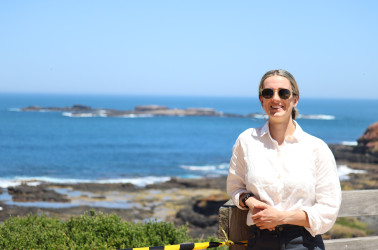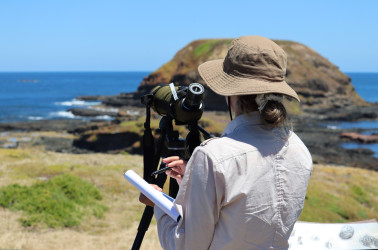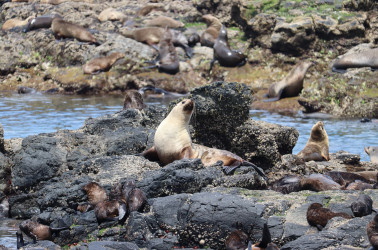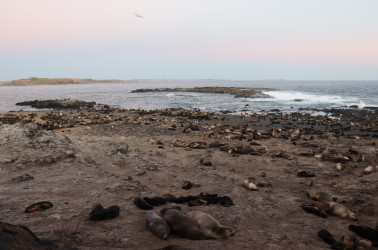Graceful, powerful and a key predator, the Australian Fur Seal is a stunning marine acrobat that plays an important balancing role in its ecosystem. It is one of the rarest fur seals in the world, making its protection critical to ensuring a sustainable future.
Assessing the impacts of anthropogenic noise on the Australian Fur Seal
PhD Research
The Project
With one of the primary breeding grounds for the species – Seal Rocks, Victoria – also being a popular tourist destination, there is concern that anthropogenic noise may be harming their ability to communicate, therefore affecting parent-offspring interactions, and territorial behaviour.
FAME is partnering with PhD Candidate Jessalyn Taylor and the University of Sydney to research the impact of human-generated noise on this species, and develop appropriate mechanisms for limiting any impact.
Why we need to act
The Australian Fur Seal (Arctocephalus pusillus doriferus) is the largest fur seal found in Australian waters. It lives along the south-east coast of Australia, ranging from the northern NSW coast - where it is listed as Vulnerable, down to Tasmania and across to South Australia - where it is listed as Rare. They are one of the rarest fur seals in the world, with an optimistic estimate of their national population being a mere 120,000 animals.
As high-level predators, Australian Fur Seals play an important role in the marine ecosystem.

Threats to the species
Whilst Great White Sharks are natural predators of Australian Fur Seals, the seals are also caught in fishing nets, resulting in injury or death. Sadly, human activity has contributed significantly to the decline of this beautiful species. After being hunted during the 1800s for their skins, blubber and oil, the species has never recovered.
The effect of vessels – including those breaching approach regulations (coming within 5m of the animals) – and other noise-generating equipment on marine life has been of growing concern this century.

Solution and approach
Running from February 2022 to July 2023, the primary objective of this project will be the development of a novel and robust ‘acoustic impact model’ of vessel visitation. In other words, Taylor will create a detailed ‘map’ of how different vessel types, and different uses and distances, affect the seals.
This will be done through the integration of four variables into the model:
Vessel noise around Seal Rocks will be recorded using underwater recording devices (hydrophones) to monitor vessel visitation and its effect on the natural background noise.
Direct observation of vessels approaching Seal Rocks will be used to visually catalogue vessel visitation, provide reference points for acoustic data, and with the aid of drone mosaic images, identify ‘hotspots’ of visitation
Behavioural responses of seals to vessel noise (in-air) will be assessed using playback of recorded motor vessel noise
Pup health status will be evaluated using blood parameters and body condition index. To enable comparisons between seasons and between year, each type of data will be collected in high- (summer, breeding) and low-visitation (winter, non-breeding) periods for two consecutive years.
Not only does this research address a key knowledge gap in the conservation management of Australian fur seals, the methodology employed is readily transferable to other sites, and other pinniped, marine mammal and potentially seabird species.
Importantly, the results of this project will be communicated to government and other key stakeholders to inform management regulations at Seal Rocks and other sensitive marine sites.
The outcomes will also be used to promote and enhance best-practice guidelines for ecotourism, both locally and internationally.
FAME is partnering with the University of Sydney for this project.





Follow our cause in saving Australia's endangered wildlife, and receive newsletter updates on the Australian Fur Seal – PhD Research and other projects and successes.

